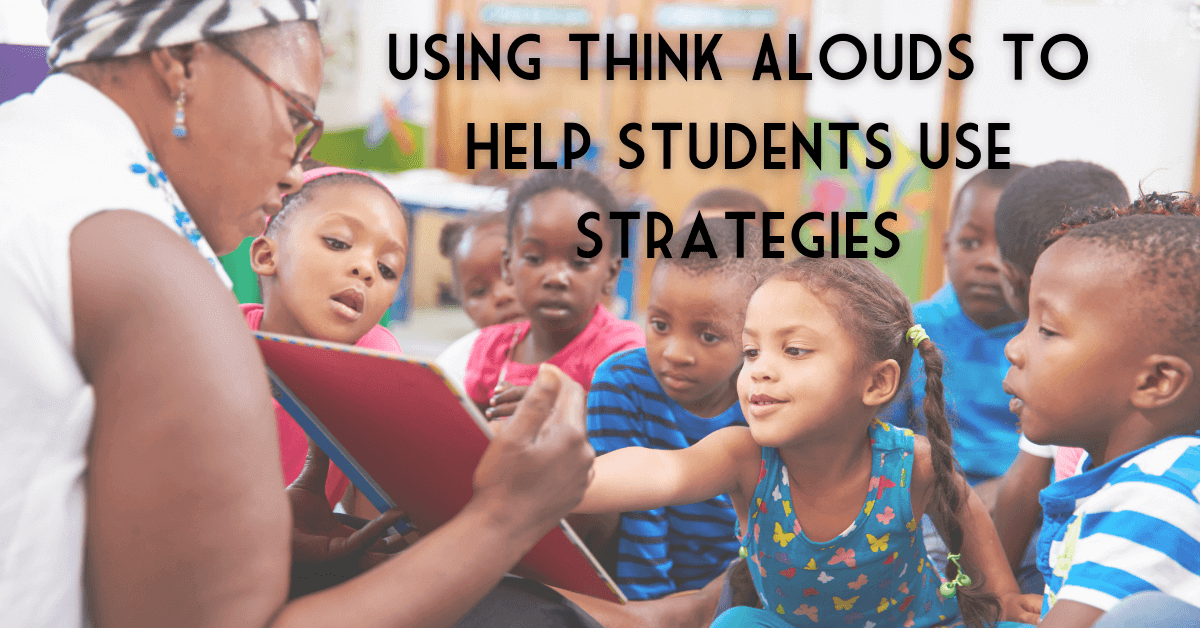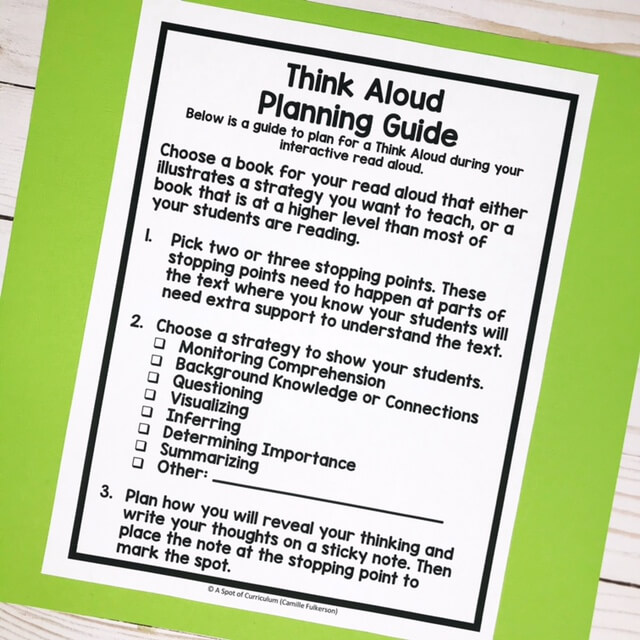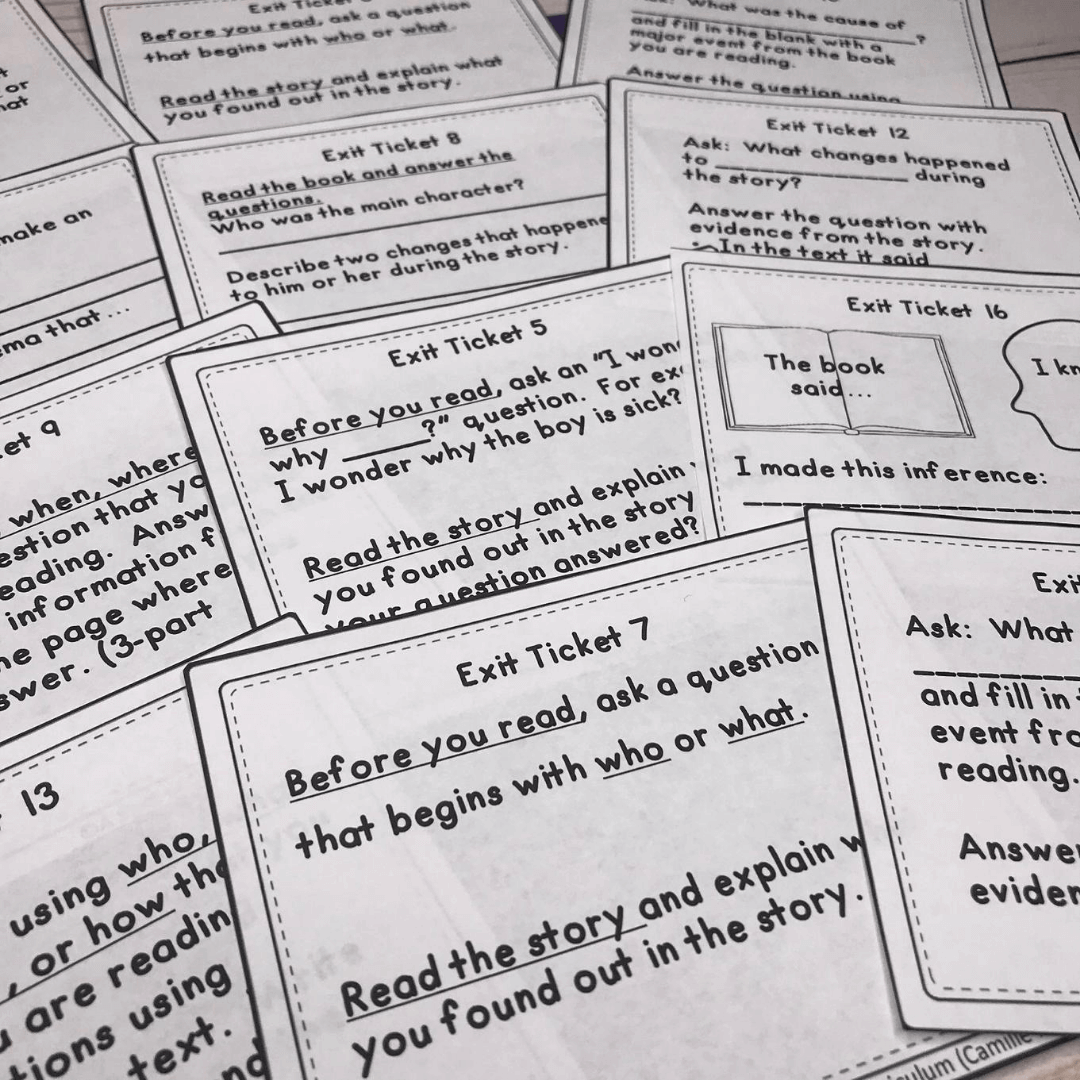Do you ever wonder why you teach reading comprehension strategies to students and yet many students don't seem to use them? This had always frustrated me because I thoroughly taught each strategy. I modeled it and the students practiced it. They were successful in their practice, so why wouldn't they use it independently? I discovered my solution using Think Alouds.

Why Students Just Read?
The reason students don't use reading strategies is that they don't see a need for it in their reading. They also cannot see you, or any other reader, using these strategies. The strategies are literally invisible to them. When we teach the strategies, they understand it but still don't see the connection to their own reading. Many students feel that reading well is knowing all the words and they don't realize all the thinking that must happen to comprehend the text.
Use Think Alouds to Make a Connection
When you have students that can practice using the strategies but don't use them in their own reading, this is when they need to be shown how to use the strategy. The best way to show students how to use a Think Aloud is to reveal your thinking while you are reading aloud. A Reading Rockets Article entitled Think Alouds said that doing a think-aloud is like “eavesdropping on your thinking.” Your students need to see you using these strategies, explaining why you are using them, and how to use them, during authentic reading. When you consistently show your students how to use the reading strategies, they will begin to recognize opportunities to use them in their own reading.
How To Plan a Think Aloud
I find the easiest way to intentionally use a Think Aloud to show reading strategies is to use a three-step plan that I read about in an ASCD newsletter here. These are the three steps I use to plan:
- Pick a few exciting stopping points. I like to pick the parts in the story where there might be confusion or there is a lot of action.
- Pick a strategy to highlight. There is often more than one strategy that would lend itself to the story you are reading.
- Write your notes on a sticky note. The note can mark the spot of your stopping point. It is okay to write anything from a script to bullet points to plan what you are going to say.
You need to use “I” statements in order to tell students about your thinking. Also, you can choose to write as much or as little as you need to talk about your thinking. If you are feeling awkward, then I suggest writing more like a script. It will help you to have all your “thinking” written down.
If you are afraid that you might forget the steps to planning a Think Aloud, I have developed a Think Aloud Planning Guide to help you. It will help you remember the steps and I included the reading strategies for you to consider as you plan.

Once my kids are a strategy consistently, I like to use these Reading Exit Tickets to assess their progress. The exit tickets are questions that are aligned with the standards and can be used with any book. They ask the students to explain their thinking and write about their reading. I find their reading comprehension improves as they use reading strategies more consistently. There are exit tickets for 2nd Grade, or 3rd Grade, or 4th Grade in both digital and print formats.

New Hope for Your Students
I can see it now. As you use Think Alouds consistently in your classroom, your students will begin to bloom as readers. You will see your students soar as they become active and engaged readers. They will understand the points in their reading when using strategies is important and begin to consciously use them. You will use them consistently as part of your reading comprehension instruction. Your students will have wonderful conversations with you and their classmates about the books they are reading.


